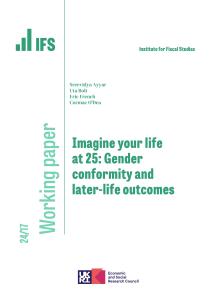In this paper we argue that only when one uses data and arguments relating to the life-time experiences of individuals or households within an economy can one understand recent trends and patterns in saving rates. Only within this framework is it sensible to design and analyse policies to encourage saving either in the population as a whole or in particular groups of households. These issues are becoming increasingly important as income inequality increases, populations age and as proposals relating to tax harmonisation, cross-border capital flows and tax competition begin to take shape EU member states continue to show very diverse saving behaviour and governments continue to introduce tax incentive schemes designed to help particular groups. To understand the issues relating to the design of policies for household saving one must first understand how life-time profiles of consumption, income and demographic profiles have evolved and are likely to evolve in the future. We present these profiles and show how they can be used as an input into techniques designed to look at the effects of recent demographic and labour market changed on life-cycle savings profiles.










